It looks like you're using an Ad Blocker.
Please white-list or disable AboveTopSecret.com in your ad-blocking tool.
Thank you.
Some features of ATS will be disabled while you continue to use an ad-blocker.
share:
Just starting out so I'm a bit overwhelmed posting after some of the amazing artwork I'm seeing here.
Had some warmer weather and clear skies last night so I got a few photos taken. Orion seems to be my favorite subject right now. Need to vary my tune a bit, but it just looks good. Anyway, here they are.
B&W Pleiades
Blue filter, minor adjustments. Iso 400, 10 seconds, 3.5 aperture
color Orion
Minor adjustments. Iso 200, 20 seconds, 2.8 aperture
B&W Orion
Blue filter. Minor adjustments. Iso 200, 20 seconds, 2.8 aperture.
B&W Orion 2
Blue filter. Minor adjustments. Iso 200, 20 seconds, 2.8 aperture.
The camera I'm using is a Sony CyberShot DSC-H5 mounted on an old velbon tripod. For post processing I have been using GIMP and Snapseed. Hopefully, I will be adding to my toolbox very soon. I've got a Canon sx10is en route so I'll be able to run chdk and get more than 30 seconds on my shutter time.
Had some warmer weather and clear skies last night so I got a few photos taken. Orion seems to be my favorite subject right now. Need to vary my tune a bit, but it just looks good. Anyway, here they are.
B&W Pleiades
Blue filter, minor adjustments. Iso 400, 10 seconds, 3.5 aperture
color Orion
Minor adjustments. Iso 200, 20 seconds, 2.8 aperture
B&W Orion
Blue filter. Minor adjustments. Iso 200, 20 seconds, 2.8 aperture.
B&W Orion 2
Blue filter. Minor adjustments. Iso 200, 20 seconds, 2.8 aperture.
The camera I'm using is a Sony CyberShot DSC-H5 mounted on an old velbon tripod. For post processing I have been using GIMP and Snapseed. Hopefully, I will be adding to my toolbox very soon. I've got a Canon sx10is en route so I'll be able to run chdk and get more than 30 seconds on my shutter time.
a reply to: eriktheawful
Cool thread and nice pics.
I was wondering, have you, or anyone else here ever taken a close up pic of Venus?
Cool thread and nice pics.
I was wondering, have you, or anyone else here ever taken a close up pic of Venus?
a reply to: eriktheawful
The camera has a fixed lens with a 12x stabilized zoom. It's kind of a hybrid of a dslr and a point and shoot. You can do full manual, shutter priority, aperture priority, program, along with several presets. Lens equivalent is around 35mm to 430mm. All star shots were made with no zoom so you could say 35mm for those. The moon shots I've done were zoomed in all the way so those were 430mm. It's only 7.2mp though.
Last year my wife came across an an incredible deal on a Canon AE-1 program with a 50mm lens, and I have come across 3 different zoom lenses for it. All are 70mm to 200mm and I have a number of rolls of film to have processed, just been doing a bit of foot dragging on it.
I've been using digital to learn with and it's amazing what you can do with it but I'm partial to film for some reason. Guess I'm showing my age. Lol.
The camera has a fixed lens with a 12x stabilized zoom. It's kind of a hybrid of a dslr and a point and shoot. You can do full manual, shutter priority, aperture priority, program, along with several presets. Lens equivalent is around 35mm to 430mm. All star shots were made with no zoom so you could say 35mm for those. The moon shots I've done were zoomed in all the way so those were 430mm. It's only 7.2mp though.
Last year my wife came across an an incredible deal on a Canon AE-1 program with a 50mm lens, and I have come across 3 different zoom lenses for it. All are 70mm to 200mm and I have a number of rolls of film to have processed, just been doing a bit of foot dragging on it.
I've been using digital to learn with and it's amazing what you can do with it but I'm partial to film for some reason. Guess I'm showing my age. Lol.
a reply to: eql612
Okay, the reason I asked is: when shooting the stars, remember the 500 rule for exposure, which is if you do not want any star trails, but want to keep the stars pin point, you must limit the amount of time you expose your frame (open the shutter for) if you are using a fixed mount and not a tracking mount.
To find this out, you divide 500 by the focal length of the lense. So for 35mm, you'd not expose it longer than 14 seconds. Anything longer and the stars will trail. Obviously the longer the focal length the shorter time you have, at 430mm you'd have just over 1 second only, which means to zoom in like that you need a mount that can track with the stars.
Okay, the reason I asked is: when shooting the stars, remember the 500 rule for exposure, which is if you do not want any star trails, but want to keep the stars pin point, you must limit the amount of time you expose your frame (open the shutter for) if you are using a fixed mount and not a tracking mount.
To find this out, you divide 500 by the focal length of the lense. So for 35mm, you'd not expose it longer than 14 seconds. Anything longer and the stars will trail. Obviously the longer the focal length the shorter time you have, at 430mm you'd have just over 1 second only, which means to zoom in like that you need a mount that can track with the stars.
a reply to: LardoCalorissian
So that's a no?
All this equipment and looking at the sky but noone ever thought of zooming into one of the brightest objects in the sky and take a picture?
Is someone here willing to do so?
What about the stars? Ever took your high powered camera and zoomed in all the way?
So that's a no?
All this equipment and looking at the sky but noone ever thought of zooming into one of the brightest objects in the sky and take a picture?
Is someone here willing to do so?
What about the stars? Ever took your high powered camera and zoomed in all the way?
I'll see about snapping a closer picture of Venus tonight with my new telephoto lens.
Venus is kind of a boring object, unless you do it through a telescope. Mostly what you'll see is a white dot, or a white dot going through phases like the Moon.
"zooming" in on stars mostly give you very bright dots, unless there are nearby things like nebula. You can do some pretty awesome tricks with filters and get some rather cool effects with halos, and other camera artifacts.
If the weather holds, I'll see what I can get with my camera tonight.
In the mean time: Here's a picture of both Venus and Mars I took back on the 12th. Venus is the brightest "star" in the image and Mars is the orange looking star going diagnally towards the upper left from Venus:
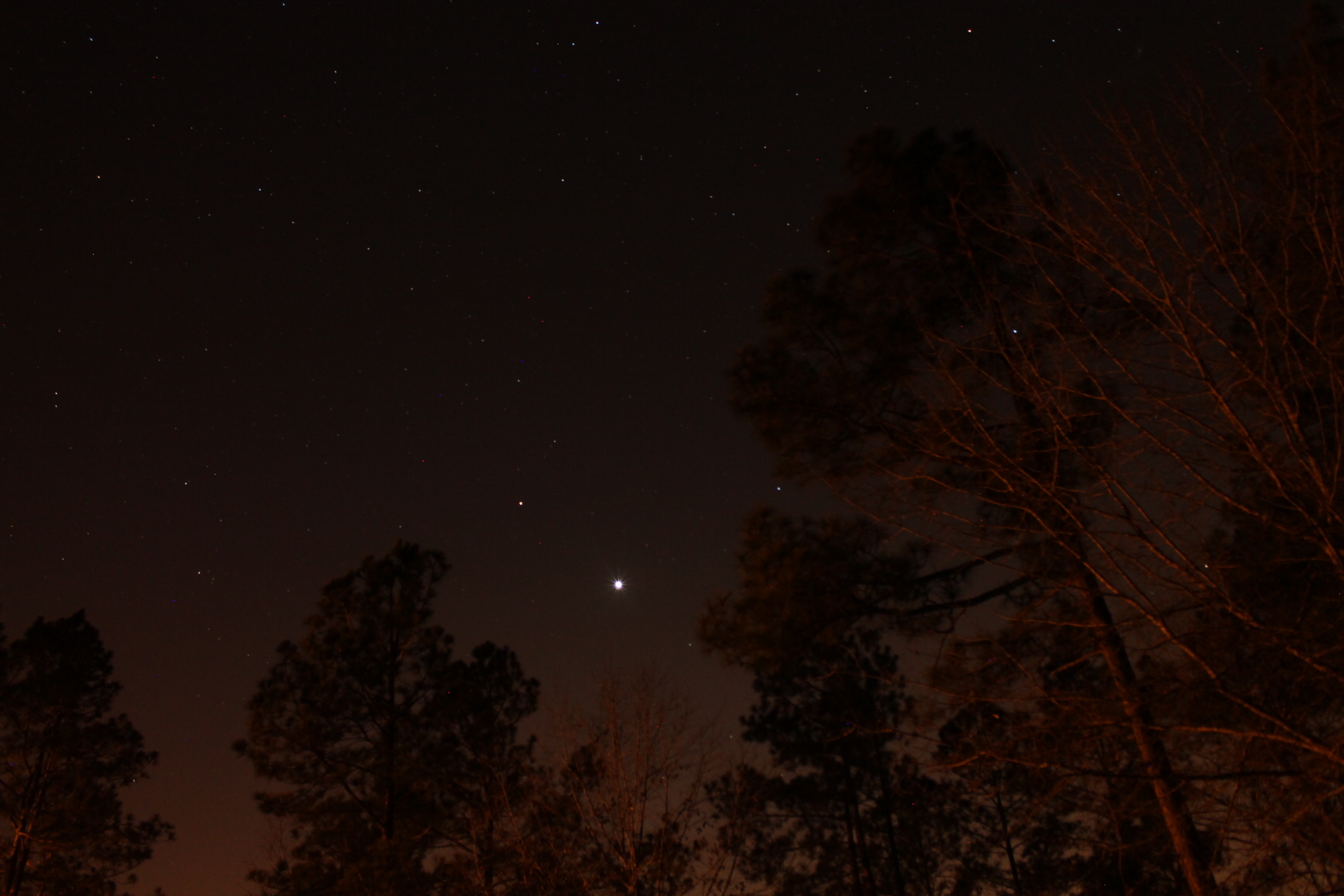
Venus is kind of a boring object, unless you do it through a telescope. Mostly what you'll see is a white dot, or a white dot going through phases like the Moon.
"zooming" in on stars mostly give you very bright dots, unless there are nearby things like nebula. You can do some pretty awesome tricks with filters and get some rather cool effects with halos, and other camera artifacts.
If the weather holds, I'll see what I can get with my camera tonight.
In the mean time: Here's a picture of both Venus and Mars I took back on the 12th. Venus is the brightest "star" in the image and Mars is the orange looking star going diagnally towards the upper left from Venus:

a reply to: eriktheawful
Ok, that'd be cool.
We'll see about that.
I'll see about snapping a closer picture of Venus tonight with my new telephoto lens.
Ok, that'd be cool.
Venus is kind of a boring object, unless you do it through a telescope. Mostly what you'll see is a white dot, or a white dot going through phases like the Moon.
We'll see about that.
So, after waiting until it got mostly dark, and having to wish the clouds away, I got some shots of Venus using my new 500mm telephoto lens, on just
the tripod (very, very flimsy tripod with the weight of that old school lens on it...wiggle wiggle wiggle):
ISO 800, Focal length (somewhere over 1000mm because I was using my 2x converter), exposure 1/100 sec.
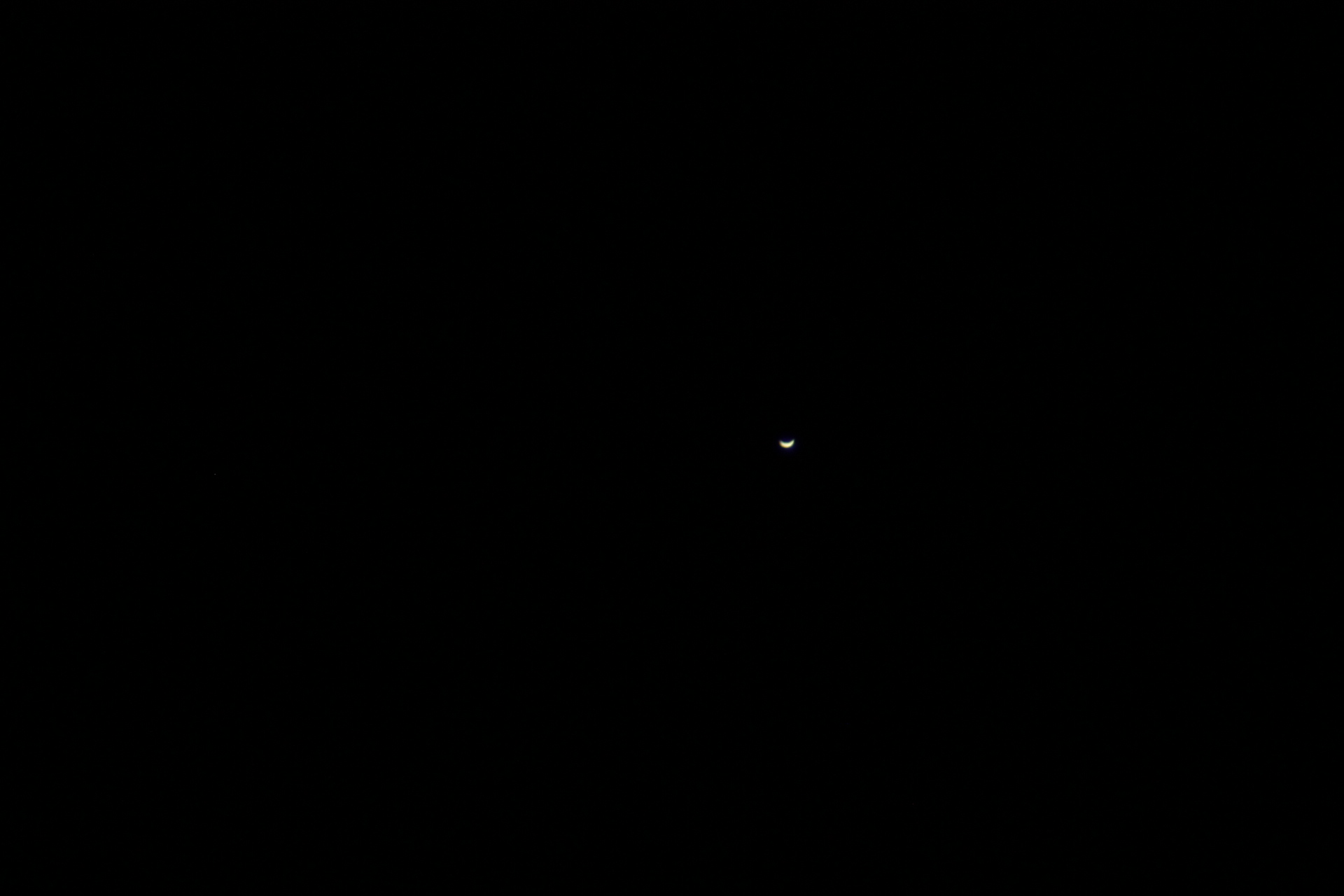
You can see the crescent phase that it's in right now. I zoomed in with GIMP:
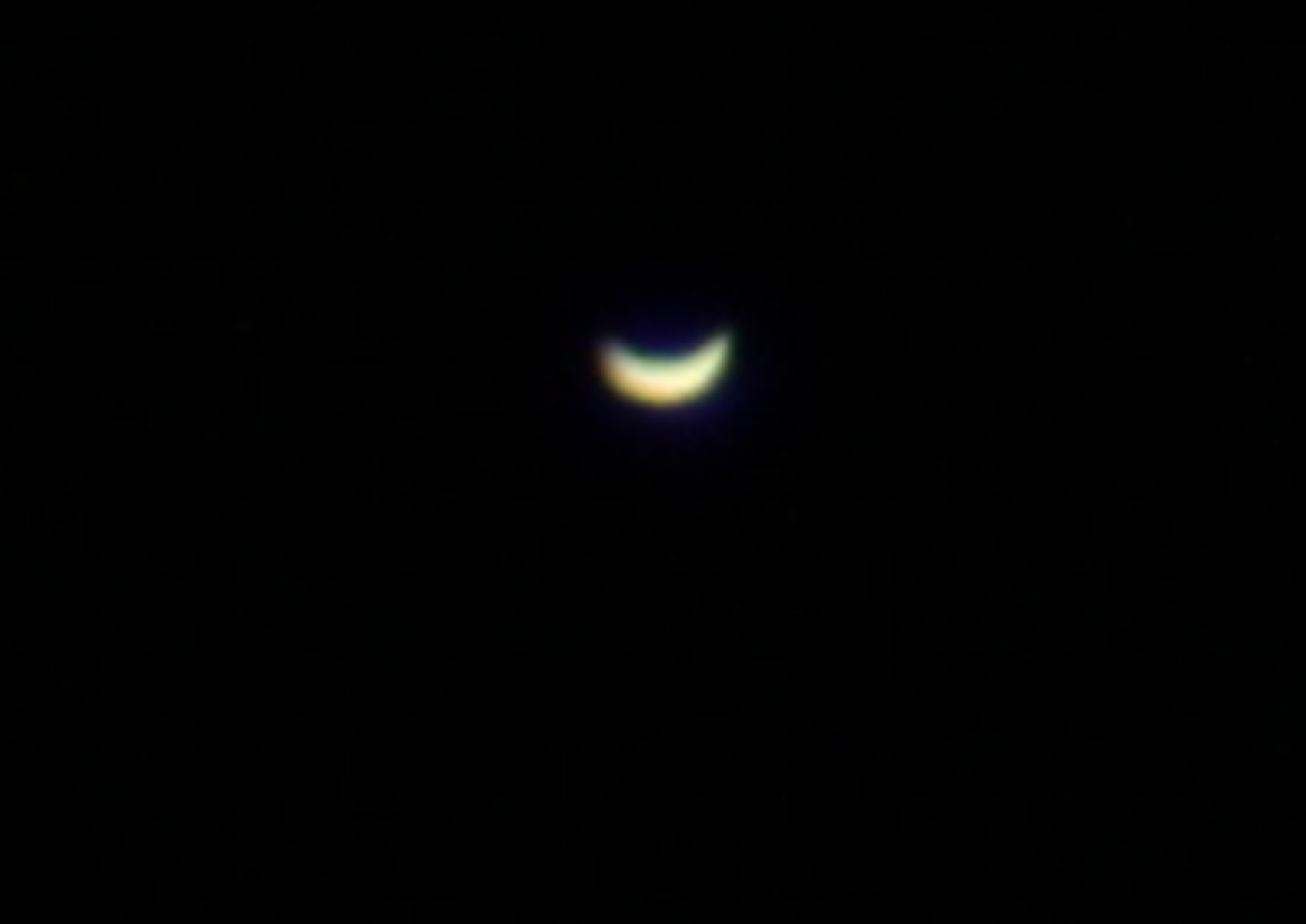
Second shot, ISO 1600, same focal length, exposure changed to 1/80 of a second:
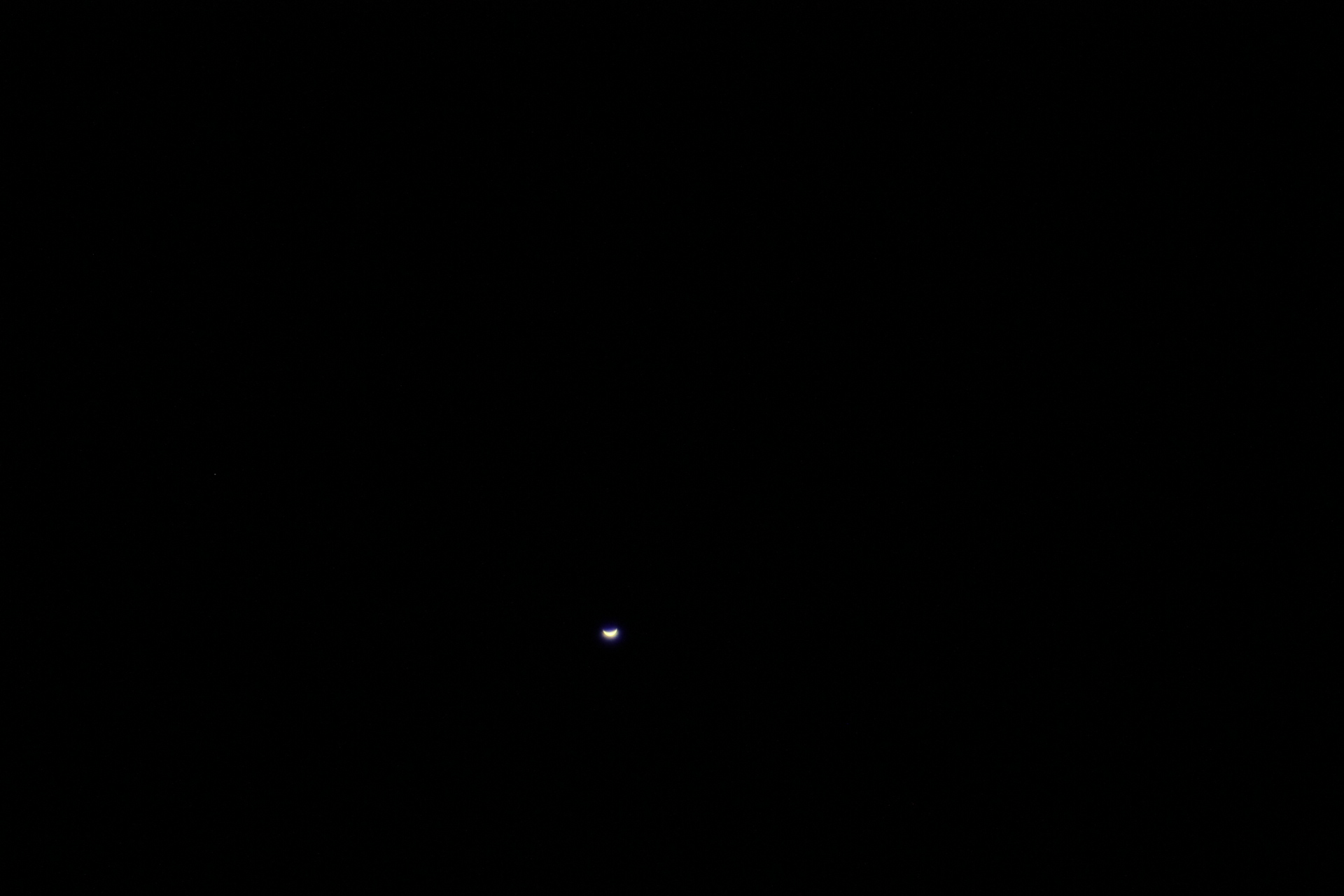
And again, zoomed in with GIMP:
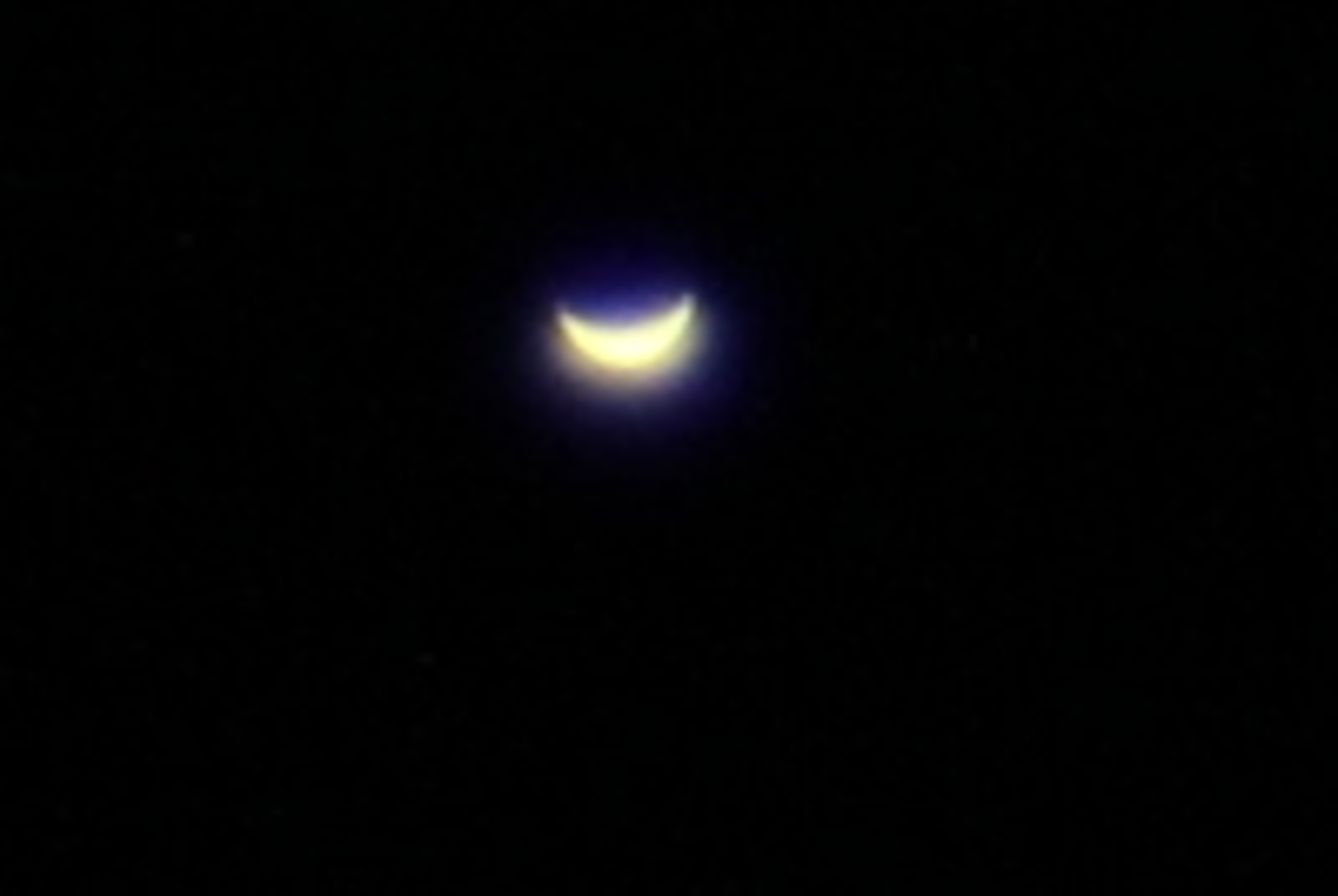
On a funnier note: I got a UFO! er.....not the bright light wiggling around, that's Venus when you move the camera around (wiggle wiggle wiggle) during a shot.
I mean the Moth Monster in the upper left hand part of the image, hehehehe. Bugs. Or a bat. More than likely a bat. We have them here.
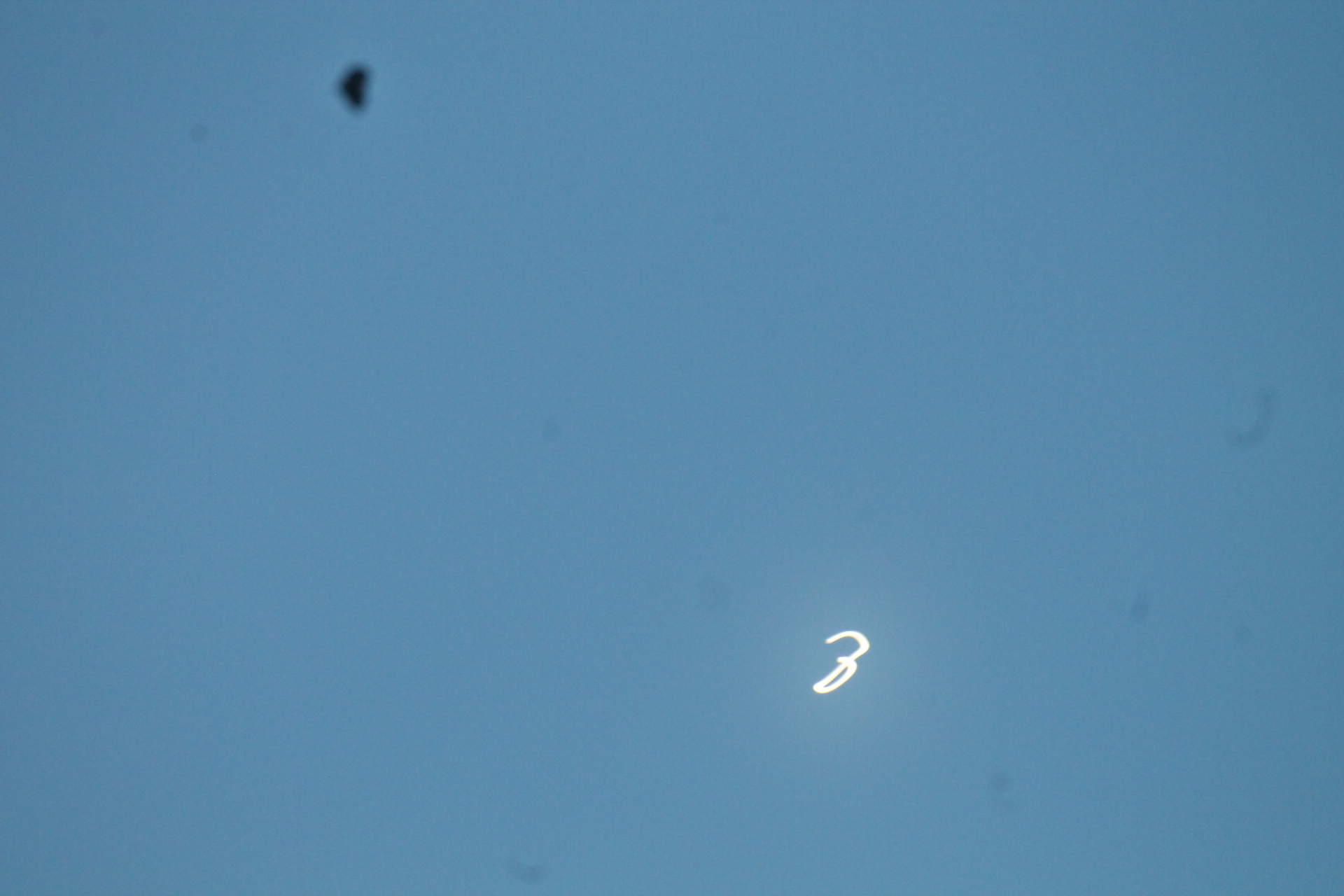
ISO 800, Focal length (somewhere over 1000mm because I was using my 2x converter), exposure 1/100 sec.

You can see the crescent phase that it's in right now. I zoomed in with GIMP:

Second shot, ISO 1600, same focal length, exposure changed to 1/80 of a second:

And again, zoomed in with GIMP:

On a funnier note: I got a UFO! er.....not the bright light wiggling around, that's Venus when you move the camera around (wiggle wiggle wiggle) during a shot.
I mean the Moth Monster in the upper left hand part of the image, hehehehe. Bugs. Or a bat. More than likely a bat. We have them here.

edit on 2/20/2017 by eriktheawful because: (no reason given)
a reply to: eriktheawful
That is a boring result indeed
Thank you very much for taking the trouble, I appreciate it!
So how powerful is your setup compared to a Nikon P900?
That is a boring result indeed
Thank you very much for taking the trouble, I appreciate it!
So how powerful is your setup compared to a Nikon P900?
edit on 20-2-2017 by LardoCalorissian because: (no reason given)
a reply to: LardoCalorissian
Mine is more powerful in my opinion.
The P900 has a higher megapixel rating than mine, but it's not a true DSLR camera: You can't change the lens out. You're stuck with that 24mm - 2000mm autolens.
For astrophotography: that sucks.
My little Canon's stock lens is 18mm to 55m. But that means I can zoom down to a wide angle shot at 18mm, meaning I can have it on a fixed tripod and expose a shot for up to 27 seconds before the stars trail.
The P900 can't expose for longer than just over 20 seconds before getting star trails because it can't go below 24mm focal length.
I can change my lens out to a 6.5mm wide angle lens and open the shutter for up to 77 seconds. The P900 can't do that.
So while it's a pretty cool camera, I wouldn't want to go out and spend the money on it if I want to do astrophotography. You can't even hook it up to do through the telescope images.
Mine is more powerful in my opinion.
The P900 has a higher megapixel rating than mine, but it's not a true DSLR camera: You can't change the lens out. You're stuck with that 24mm - 2000mm autolens.
For astrophotography: that sucks.
My little Canon's stock lens is 18mm to 55m. But that means I can zoom down to a wide angle shot at 18mm, meaning I can have it on a fixed tripod and expose a shot for up to 27 seconds before the stars trail.
The P900 can't expose for longer than just over 20 seconds before getting star trails because it can't go below 24mm focal length.
I can change my lens out to a 6.5mm wide angle lens and open the shutter for up to 77 seconds. The P900 can't do that.
So while it's a pretty cool camera, I wouldn't want to go out and spend the money on it if I want to do astrophotography. You can't even hook it up to do through the telescope images.
edit on 2/20/2017 by eriktheawful because: (no reason given)
So a couple of nights ago, I set my camera up to take 60 images at ISO 800, focal length 18, f3.5, each at 25 seconds exposure. This is pretty much
what each frame looks like:

Using Deep Sky Stacker, I stacked the frames, it liked about 54 of them, and came up with this:
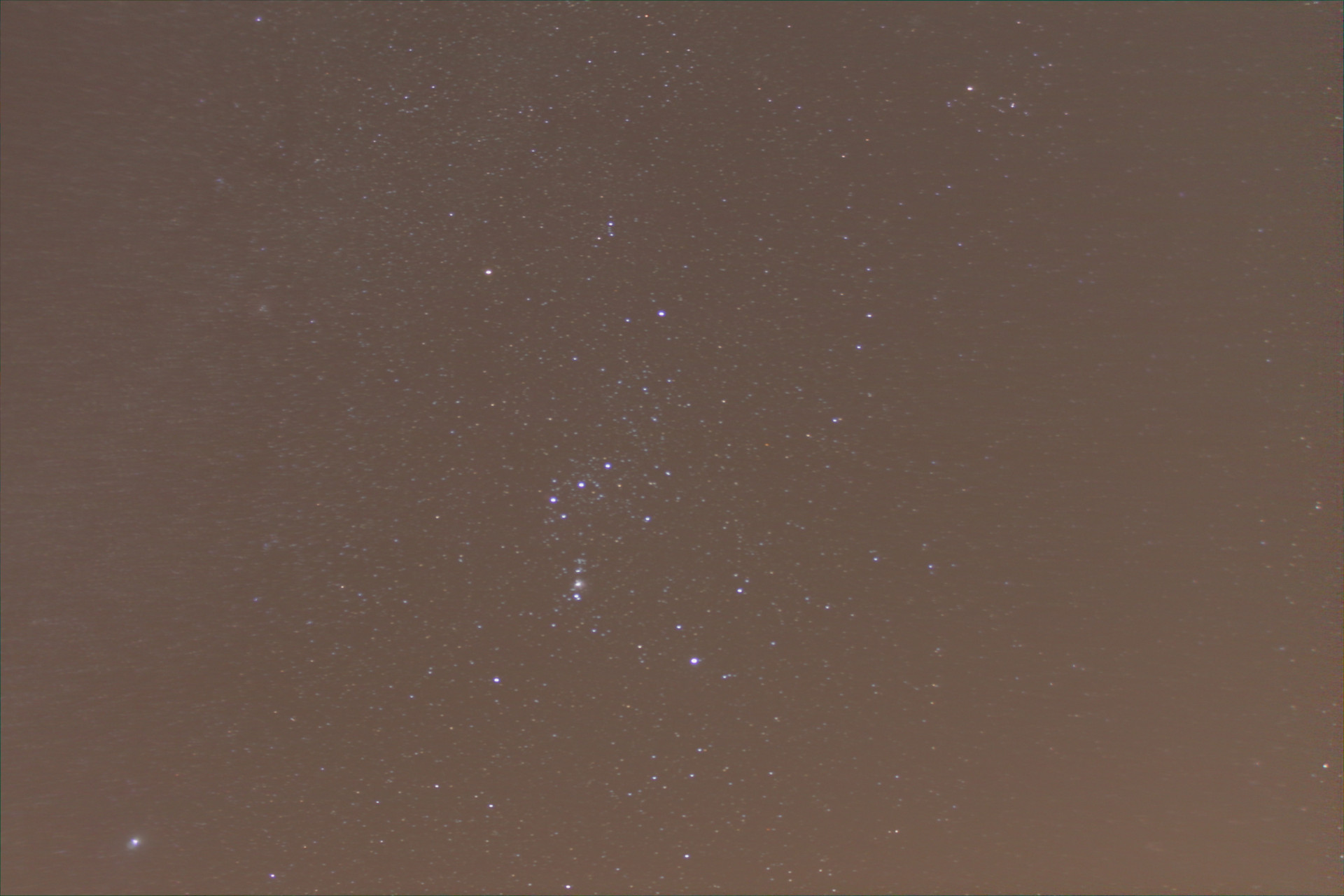
Ugly, I know, but that's because you then need to go in and change things like saturation level and adjust your RGB setting. I also use GIMP to put the final touches on it, and here we go:
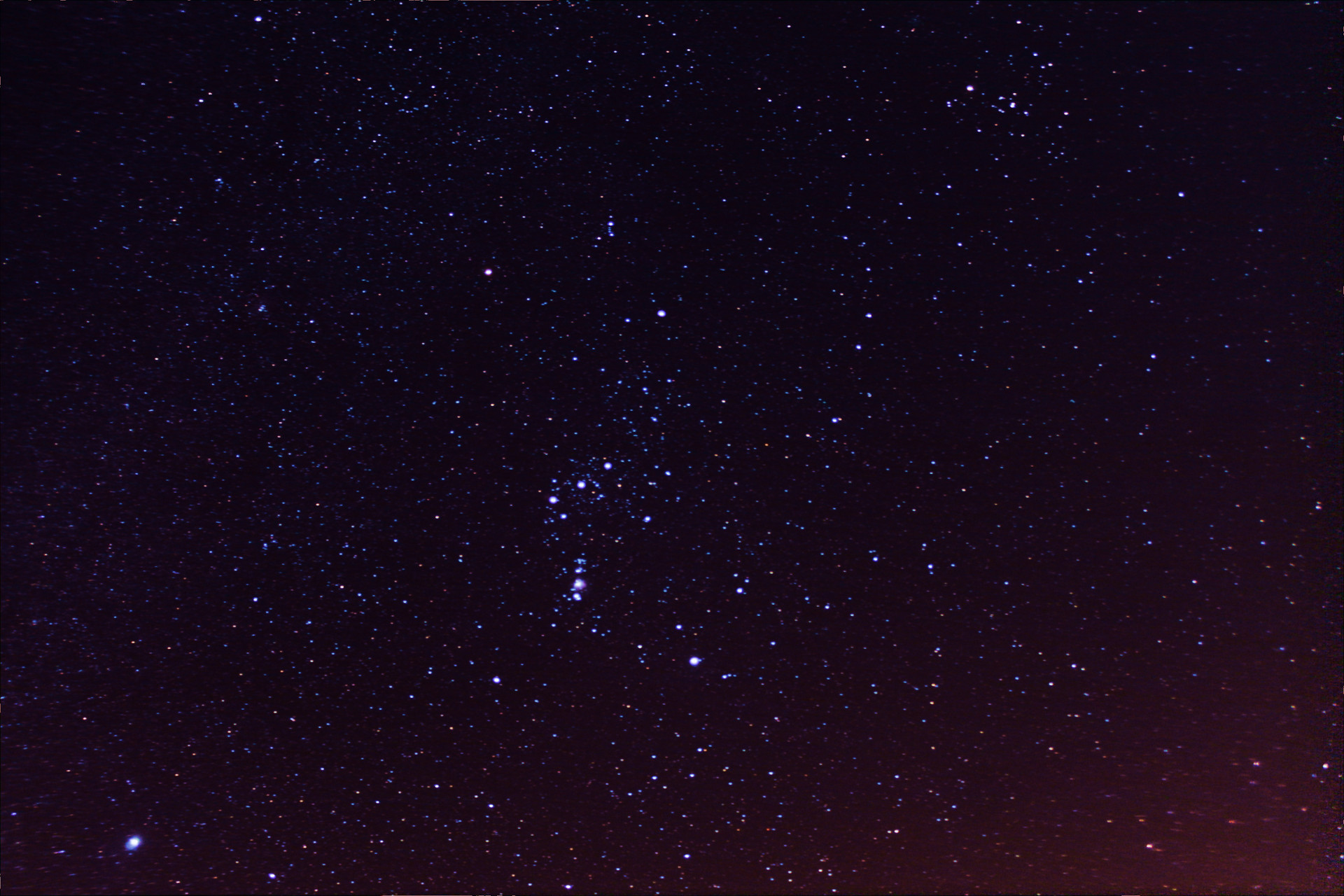
The reddish haze you see in the lower right hand corner is caused by the security lamp that the power company insists on putting on their poles. Seriously thinking of getting a filter for that wavelength of light.

Using Deep Sky Stacker, I stacked the frames, it liked about 54 of them, and came up with this:

Ugly, I know, but that's because you then need to go in and change things like saturation level and adjust your RGB setting. I also use GIMP to put the final touches on it, and here we go:

The reddish haze you see in the lower right hand corner is caused by the security lamp that the power company insists on putting on their poles. Seriously thinking of getting a filter for that wavelength of light.
Here is something that I thought some of you might like. It's a stack of 13 images of Orion, each one 25 seconds long, focal length 18mm, f3.5 at ISO
1600. I had more frames, but: The DEW monster struck! I originally took 60 frames, but after number 17, the star light dims quite a bit (I should make
a animated GIF out of it).
One effect I noticed was that as the dew on the lens increase, Sirius in the bottom left hand corner began to get a brighter and brighter halo around it.
So I used GIMP to increase the blue channel quite a bit, and got this. It's not true color of course, but I thought it looked pretty:
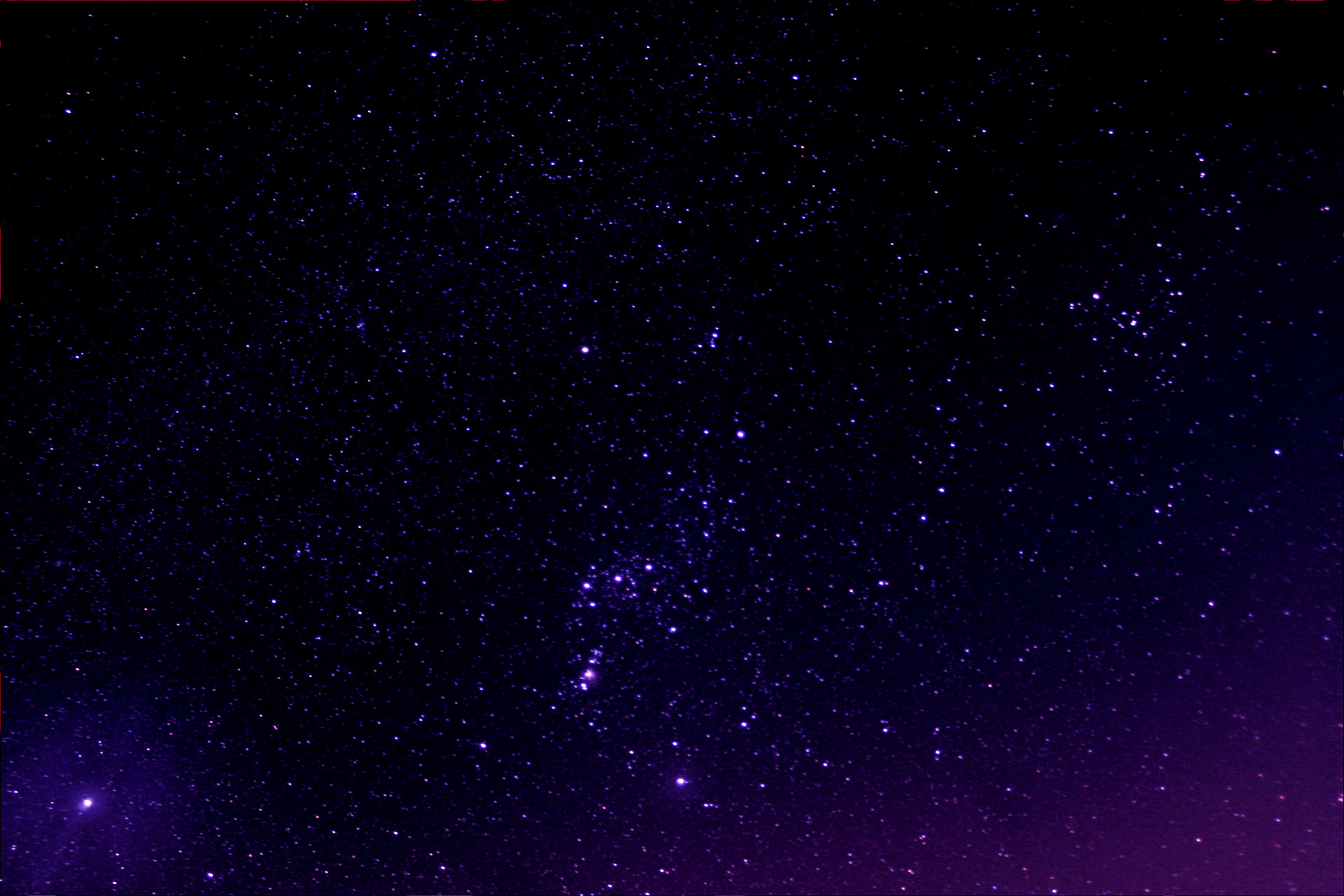
One effect I noticed was that as the dew on the lens increase, Sirius in the bottom left hand corner began to get a brighter and brighter halo around it.
So I used GIMP to increase the blue channel quite a bit, and got this. It's not true color of course, but I thought it looked pretty:

a reply to: eriktheawful
it does look pretty !
great to read all your explanations lately. i learned a few things. thanks
it does look pretty !
great to read all your explanations lately. i learned a few things. thanks
Spinning!
Stack of my 25 second exposures, without alignment, gives some pretty good star trails of Orion.
Massive orange glow is from the power pole security lights, showing why it's important to get away from the lights when doing images like this.
Also, you'll see hot pixels in the image. For some reason my stacking program doesn't like me using dark frames to remove them for non-aligned stacking. It removed ALL the data, heheh.
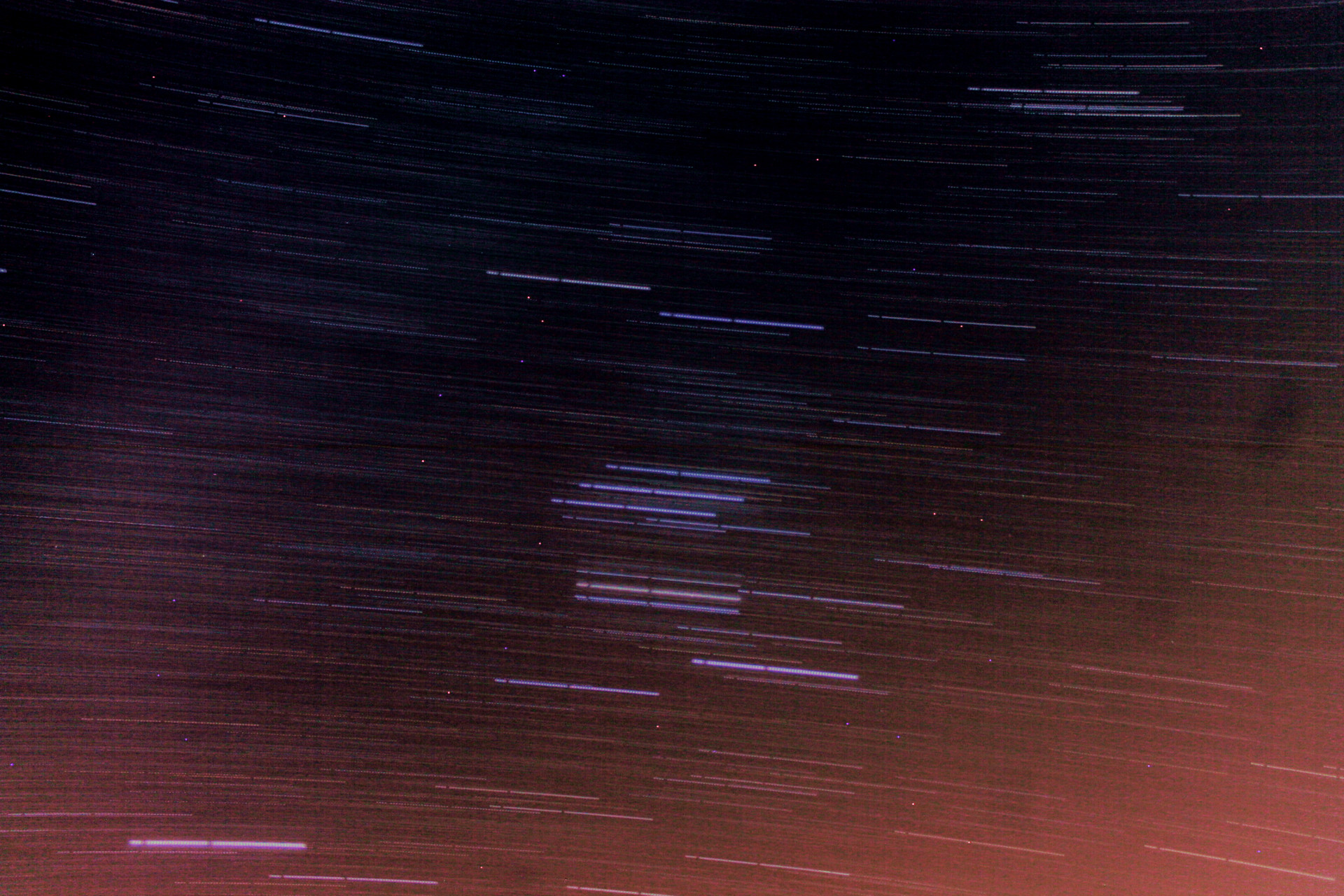
Stack of my 25 second exposures, without alignment, gives some pretty good star trails of Orion.
Massive orange glow is from the power pole security lights, showing why it's important to get away from the lights when doing images like this.
Also, you'll see hot pixels in the image. For some reason my stacking program doesn't like me using dark frames to remove them for non-aligned stacking. It removed ALL the data, heheh.

a reply to: eriktheawful
Awesome pics erik! Nice shots of Orion.... If the skies are clear tonight, I might try a star trail.
Here's a shot of the Sun today from a Nikon Coolpix L120, using a welding lens. Testing another old closet camera.
Sun spot 2638
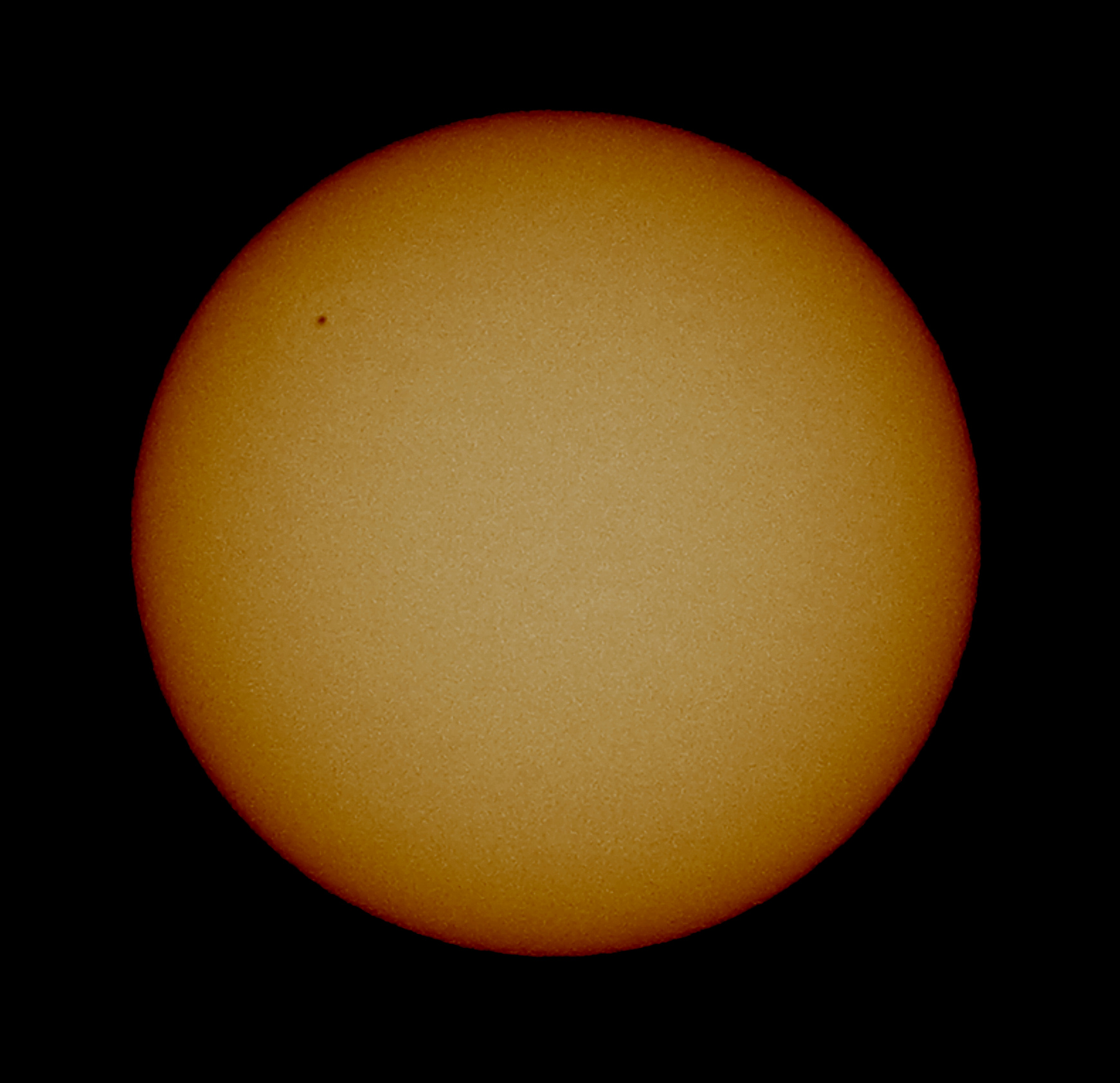
Feb, 22 2017 view from solarham
www.solarham.net...
Awesome pics erik! Nice shots of Orion.... If the skies are clear tonight, I might try a star trail.
Here's a shot of the Sun today from a Nikon Coolpix L120, using a welding lens. Testing another old closet camera.
Sun spot 2638

Feb, 22 2017 view from solarham
www.solarham.net...
edit on 22-2-2017 by imitator because: (no reason given)
in gratitude to the great work some members here in this thread generate
a meager contribution by an extreme amateur with a slightly lousy camera
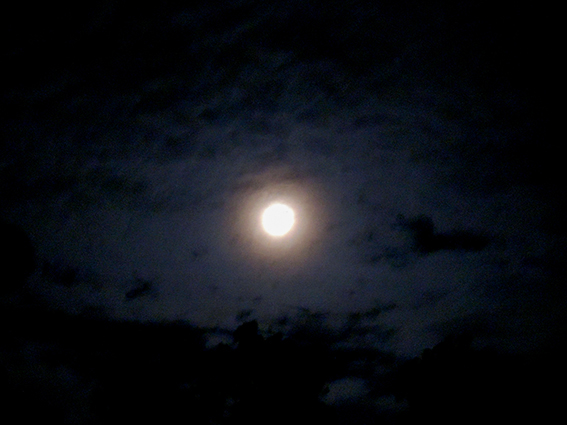 slightly 'shopped in the appearance of the colour
slightly 'shopped in the appearance of the colour
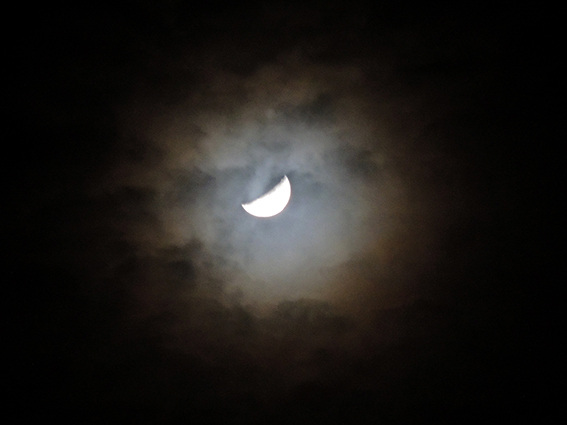 appearing on this image as photographed
appearing on this image as photographed
a meager contribution by an extreme amateur with a slightly lousy camera


My first attempt at star trails, shot in the backyard with a old budget-friendly camera. Looks like I caught an airplane flying low near Orion.
Thanks to the CHDK hack I can get very long exposures..... tis very addicting, now I have a eBay bid on a Canon T3.
Canon PowerShot SX170 IS
CHDK loaded from the SD card
ISO 100
F/3.5
30 minute shutter speed
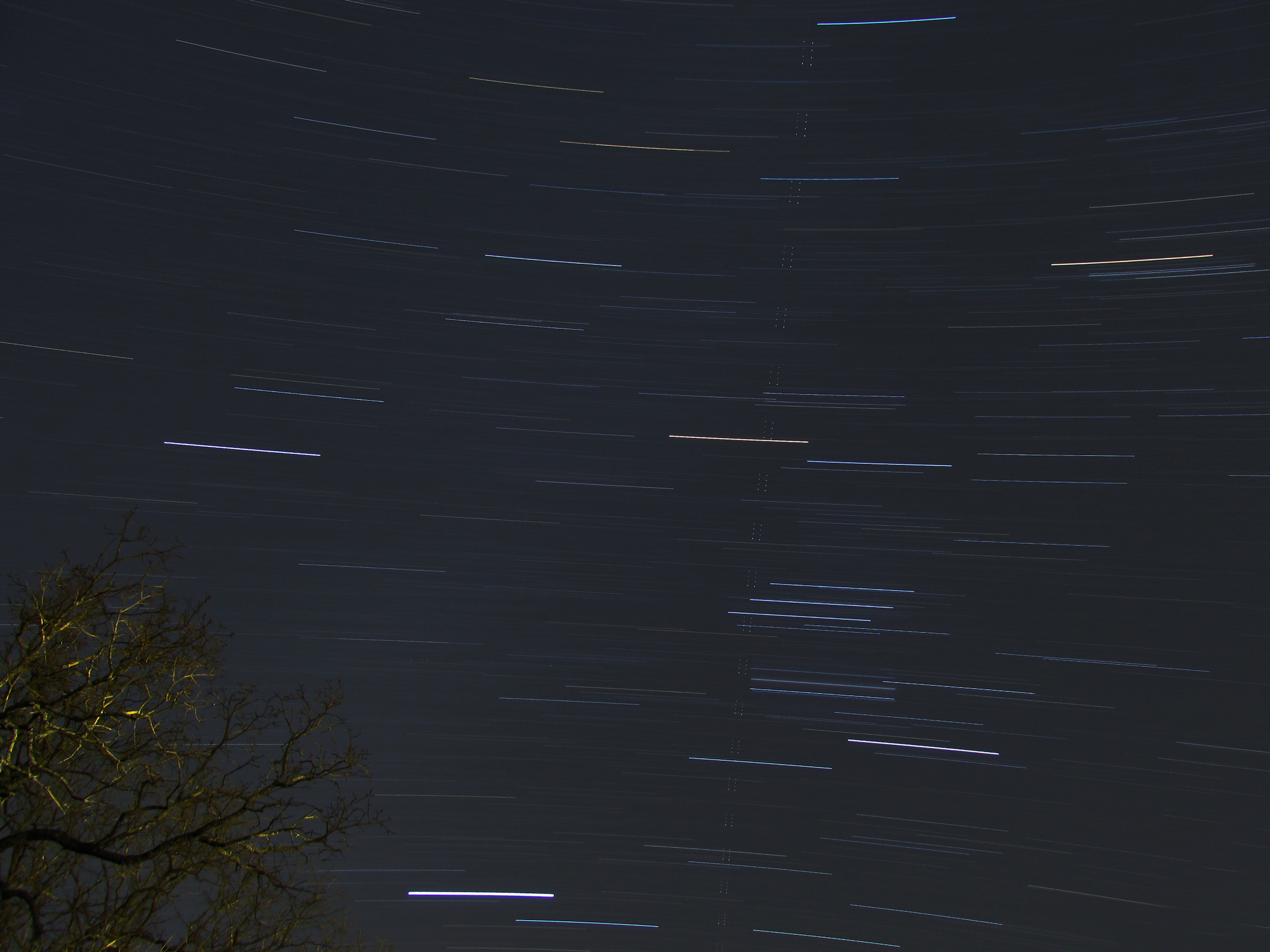
Thanks to the CHDK hack I can get very long exposures..... tis very addicting, now I have a eBay bid on a Canon T3.
Canon PowerShot SX170 IS
CHDK loaded from the SD card
ISO 100
F/3.5
30 minute shutter speed

a reply to: imitator
Great pic of the Sun!
I don't have a solar filter for my camera, but I do have some mylar sheets here. I'm thinking of seeing if I can't use them as a filter with my new telephoto lens and take some shots of the sun myself.
Great pic of the star trails too!
Great pic of the Sun!
I don't have a solar filter for my camera, but I do have some mylar sheets here. I'm thinking of seeing if I can't use them as a filter with my new telephoto lens and take some shots of the sun myself.
Great pic of the star trails too!
new topics
-
Judge rules president-elect Donald Trump must be sentenced in 'hush money' trial
US Political Madness: 3 hours ago -
Farmers wife
Music: 5 hours ago -
NJ Drones tied to Tesla explosion at Trump Las vegas
General Conspiracies: 6 hours ago -
New Jersey-Teachers Can Now Be Certified Without Passing Basic Reading Writing Math Testing
Education and Media: 9 hours ago
top topics
-
Matthew Livelsberger said he was being followed by FBI
Political Conspiracies: 12 hours ago, 16 flags -
Here we again... CHINA having mass outbreak of something
Diseases and Pandemics: 15 hours ago, 9 flags -
The 119th Congress has Officially Opened for Business
Mainstream News: 15 hours ago, 7 flags -
New Jersey-Teachers Can Now Be Certified Without Passing Basic Reading Writing Math Testing
Education and Media: 9 hours ago, 7 flags -
Paranoid Liberals Believe U.S. Service Members are More Dangerous than Illegal Aliens.
Social Issues and Civil Unrest: 15 hours ago, 6 flags -
How the Sikhs Deal with Muslim Grooming Gangs – Tommy Robinson
Social Issues and Civil Unrest: 14 hours ago, 6 flags -
NJ Drones tied to Tesla explosion at Trump Las vegas
General Conspiracies: 6 hours ago, 3 flags -
Farmers wife
Music: 5 hours ago, 1 flags -
Judge rules president-elect Donald Trump must be sentenced in 'hush money' trial
US Political Madness: 3 hours ago, 0 flags
active topics
-
Judge rules president-elect Donald Trump must be sentenced in 'hush money' trial
US Political Madness • 4 • : Lazy88 -
Paranoid Liberals Believe U.S. Service Members are More Dangerous than Illegal Aliens.
Social Issues and Civil Unrest • 31 • : Irishhaf -
Candidate TRUMP Now Has Crazy Judge JUAN MERCHAN After Him - The Stormy Daniels Hush-Money Case.
Political Conspiracies • 2173 • : WeMustCare -
Tesla Cybertruck Explodes in Front of Trump Hotel in Las Vegas
Mainstream News • 198 • : Mantiss2021 -
Matthew Livelsberger said he was being followed by FBI
Political Conspiracies • 63 • : BeyondKnowledge3 -
Musk calls on King Charles III to dissolve Parliament over Oldham sex grooming gangs
Mainstream News • 88 • : WeMustCare -
-@TH3WH17ERABB17- -Q- ---TIME TO SHOW THE WORLD--- -Part- --44--
Dissecting Disinformation • 3923 • : RelSciHistItSufi -
Watts home paranormal activity
Paranormal Studies • 6 • : TowmasterLG -
Congress Says the FBI is Covering Up Vital Info on the Jan 5th 2021 D.C. Pipe Bombs at RNC-DNC.
Political Conspiracies • 28 • : GotterDameron23 -
New Jersey-Teachers Can Now Be Certified Without Passing Basic Reading Writing Math Testing
Education and Media • 9 • : rickymouse
